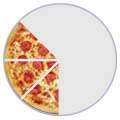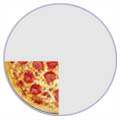Proper Fractions
 |
A Proper Fraction has a
top number |
|
| 38 | ||
(Three-Eighths) |
Examples
| 38 | 14 | 1415 | 45 |
See how the top number is smaller than the bottom number in each example? That makes it a Proper Fraction.
Three Types of Fractions
There are three types of fraction:
Fractions
A Fraction (such as 3/8) has two numbers:
NumeratorDenominator
The top number is the Numerator, it is the number of parts you have.
The bottom number is the Denominator, it is the number of parts the whole is divided into.

Example: 3/4 means:
- We have 3 parts
- Each part is a quarter (1/4) of a whole
So we can define the three types of fractions like this:
| Proper Fractions: | The numerator is less than the denominator |
|---|---|
| Examples: 1/3, 3/4, 2/7 | |
| Improper Fractions: | The numerator is greater than (or equal to) the denominator |
| Examples: 4/3, 11/4, 7/7 | |
| Mixed Fractions: | A whole number and proper fraction together |
| Examples: 1 1/3, 2 1/4, 16 2/5 |
Proper Fractions
So, a proper fraction is just a fraction where the numerator (the top number) is less than the denominator (the bottom number). Here are some examples of proper fractions:
 |
 |
 |
| 1/2 | 1/4 | 3/8 |
(One-Half) |
(One-Quarter) |
(Three-Eighths) |
